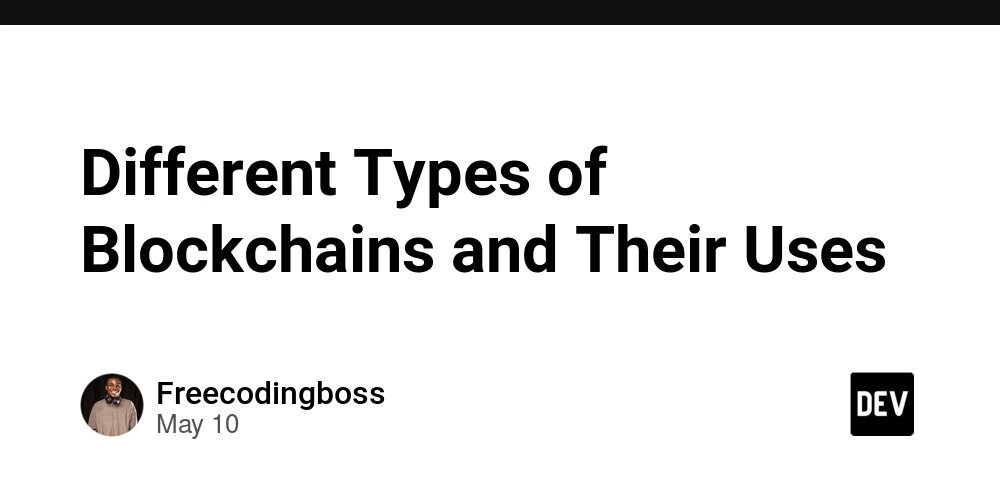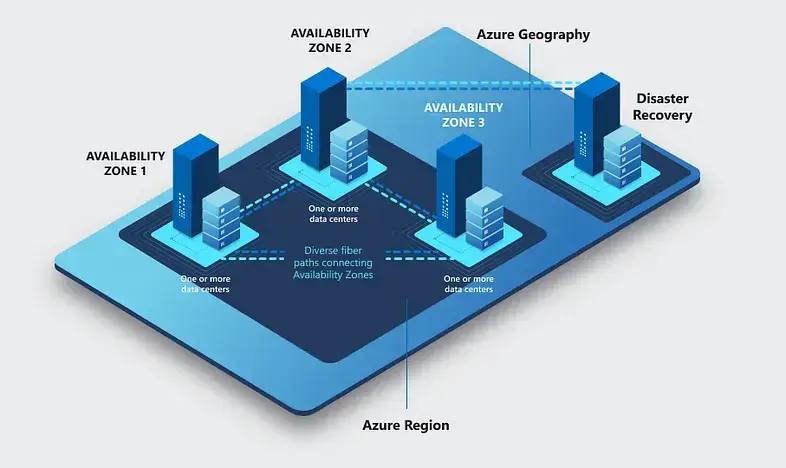Different Types of Blockchains and Their Uses
Understanding the foundational structures behind Web3 and decentralized technology Blockchain isn’t just Bitcoin, and it certainly isn’t one-size-fits-all. As industries explore this revolutionary technology, different types of blockchains have emerged — each with its own strengths, use cases, and trade-offs. Let’s break down the major types of blockchains and how they’re used in the real world: 1. Public Blockchains What it is: Public blockchains are open, permissionless networks. Anyone can join, view, or validate transactions. Examples: Bitcoin Ethereum Solana Avalanche Primary Use Cases: Cryptocurrencies Smart contracts & dApps Decentralized Finance (DeFi) NFTs and digital ownership DAOs (Decentralized Autonomous Organizations) Why it matters: Public chains champion transparency, decentralization, and censorship resistance — ideal for building truly trustless applications. 2. Private Blockchains What it is: These are permissioned networks controlled by a single organization. Access and validation rights are restricted. Examples: Hyperledger Fabric R3 Corda Quorum Primary Use Cases: Internal enterprise solutions Healthcare data privacy Banking operations Legal document management Why it matters: Enterprises use private blockchains for secure, scalable, and compliant data processing while maintaining control over the network. 3. Consortium (Federated) Blockchains What it is: A blockchain managed by a group of organizations instead of one or the public. It offers a balance between decentralization and control. Examples: IBM Food Trust Marco Polo (trade finance) Energy Web Foundation Primary Use Cases: Supply chain transparency Interbank payments Industry-wide coordination Why it matters: Consortium chains are great for industries where collaboration and trust among known entities is required. 4. Hybrid Blockchains What it is: Hybrid blockchains combine features of both public and private blockchains. Some parts are open, others are restricted. Examples: XinFin (XDC) Dragonchain Primary Use Cases: Regulated DeFi Enterprise solutions with public data integration Identity & access management Why it matters: Hybrid chains offer flexibility for organizations that need both transparency and privacy in different parts of their operations. Bonus: Sidechains & Layer 2s What they are: These are scaling solutions, not types of blockchains per se. Sidechains are independent blockchains connected to a main chain. Layer 2s are built on top of existing blockchains to offload congestion. Examples: Polygon (Layer 2 for Ethereum) Arbitrum Optimism Liquid Network (Bitcoin sidechain) Primary Use Cases: Microtransactions Gaming Scalable dApps Cheaper and faster DeFi Why it matters: They make blockchain applications more practical for everyday users by reducing gas fees and increasing speed. Conclusion Each type of blockchain serves a specific purpose — from global digital currencies to enterprise-grade data platforms. The key is understanding what you’re building and who it’s for. Web3 isn’t one chain to rule them all — it’s an ecosystem of interconnected technologies solving different problems.

Understanding the foundational structures behind Web3 and decentralized technology
Blockchain isn’t just Bitcoin, and it certainly isn’t one-size-fits-all. As industries explore this revolutionary technology, different types of blockchains have emerged — each with its own strengths, use cases, and trade-offs.
Let’s break down the major types of blockchains and how they’re used in the real world:
1. Public Blockchains
What it is:
Public blockchains are open, permissionless networks. Anyone can join, view, or validate transactions.
Examples:
Bitcoin
Ethereum
Solana
Avalanche
Primary Use Cases:
- Cryptocurrencies
- Smart contracts & dApps
- Decentralized Finance (DeFi)
- NFTs and digital ownership
- DAOs (Decentralized Autonomous Organizations)
Why it matters:
Public chains champion transparency, decentralization, and censorship resistance — ideal for building truly trustless applications.
2. Private Blockchains
What it is:
These are permissioned networks controlled by a single organization. Access and validation rights are restricted.
Examples:
- Hyperledger Fabric
- R3 Corda
- Quorum
- Primary Use Cases:
- Internal enterprise solutions
- Healthcare data privacy
- Banking operations
- Legal document management
Why it matters:
Enterprises use private blockchains for secure, scalable, and compliant data processing while maintaining control over the network.
3. Consortium (Federated) Blockchains
What it is:
A blockchain managed by a group of organizations instead of one or the public. It offers a balance between decentralization and control.
Examples:
- IBM Food Trust
- Marco Polo (trade finance)
- Energy Web Foundation
- Primary Use Cases:
- Supply chain transparency
- Interbank payments
- Industry-wide coordination
Why it matters:
Consortium chains are great for industries where collaboration and trust among known entities is required.
4. Hybrid Blockchains
What it is:
Hybrid blockchains combine features of both public and private blockchains. Some parts are open, others are restricted.
Examples:
- XinFin (XDC)
- Dragonchain
- Primary Use Cases:
- Regulated DeFi
- Enterprise solutions with public data integration
- Identity & access management
Why it matters:
Hybrid chains offer flexibility for organizations that need both transparency and privacy in different parts of their operations.
Bonus: Sidechains & Layer 2s
What they are:
These are scaling solutions, not types of blockchains per se.
Sidechains are independent blockchains connected to a main chain.
Layer 2s are built on top of existing blockchains to offload congestion.
Examples:
- Polygon (Layer 2 for Ethereum)
- Arbitrum
- Optimism
- Liquid Network (Bitcoin sidechain)
- Primary Use Cases:
- Microtransactions
- Gaming
- Scalable dApps
- Cheaper and faster DeFi
Why it matters:
They make blockchain applications more practical for everyday users by reducing gas fees and increasing speed.
Conclusion
Each type of blockchain serves a specific purpose — from global digital currencies to enterprise-grade data platforms. The key is understanding what you’re building and who it’s for.
Web3 isn’t one chain to rule them all — it’s an ecosystem of interconnected technologies solving different problems.










































































































































































![[The AI Show Episode 146]: Rise of “AI-First” Companies, AI Job Disruption, GPT-4o Update Gets Rolled Back, How Big Consulting Firms Use AI, and Meta AI App](https://www.marketingaiinstitute.com/hubfs/ep%20146%20cover.png)



























































































































![[FREE EBOOKS] Offensive Security Using Python, Learn Computer Forensics — 2nd edition & Four More Best Selling Titles](https://www.javacodegeeks.com/wp-content/uploads/2012/12/jcg-logo.jpg)



![Ditching a Microsoft Job to Enter Startup Purgatory with Lonewolf Engineer Sam Crombie [Podcast #171]](https://cdn.hashnode.com/res/hashnode/image/upload/v1746753508177/0cd57f66-fdb0-4972-b285-1443a7db39fc.png?#)





























































.jpg?width=1920&height=1920&fit=bounds&quality=70&format=jpg&auto=webp#)
































































































































































-xl.jpg)




























![New iPad 11 (A16) On Sale for Just $277.78! [Lowest Price Ever]](https://www.iclarified.com/images/news/97273/97273/97273-640.jpg)

![Apple Foldable iPhone to Feature New Display Tech, 19% Thinner Panel [Rumor]](https://www.iclarified.com/images/news/97271/97271/97271-640.jpg)




































































































